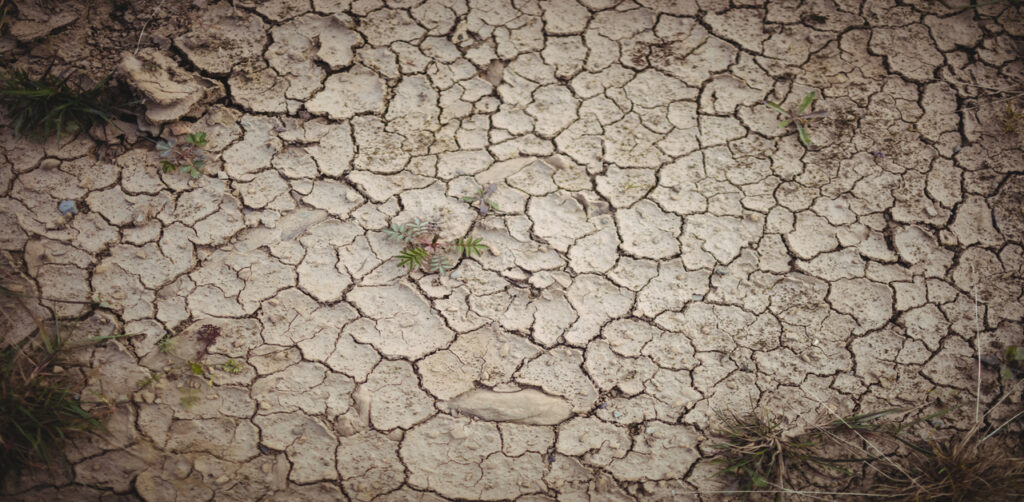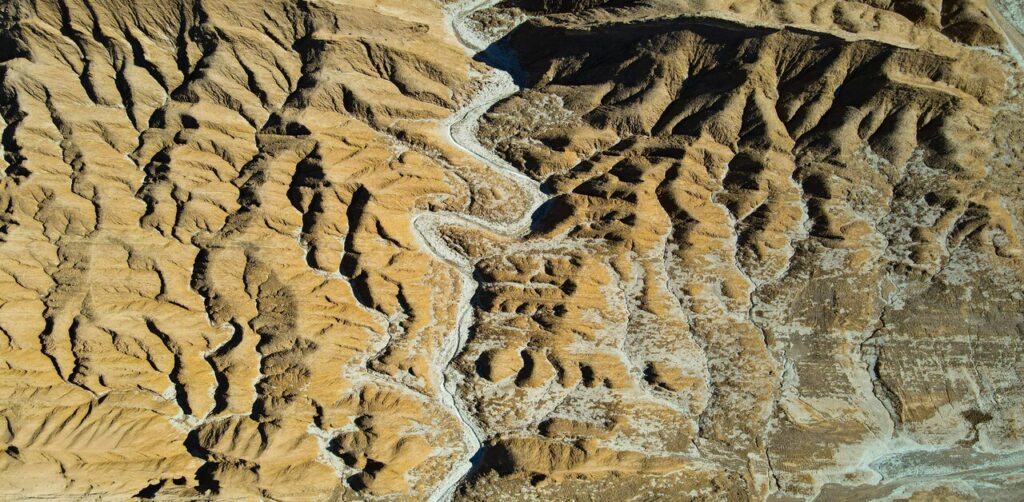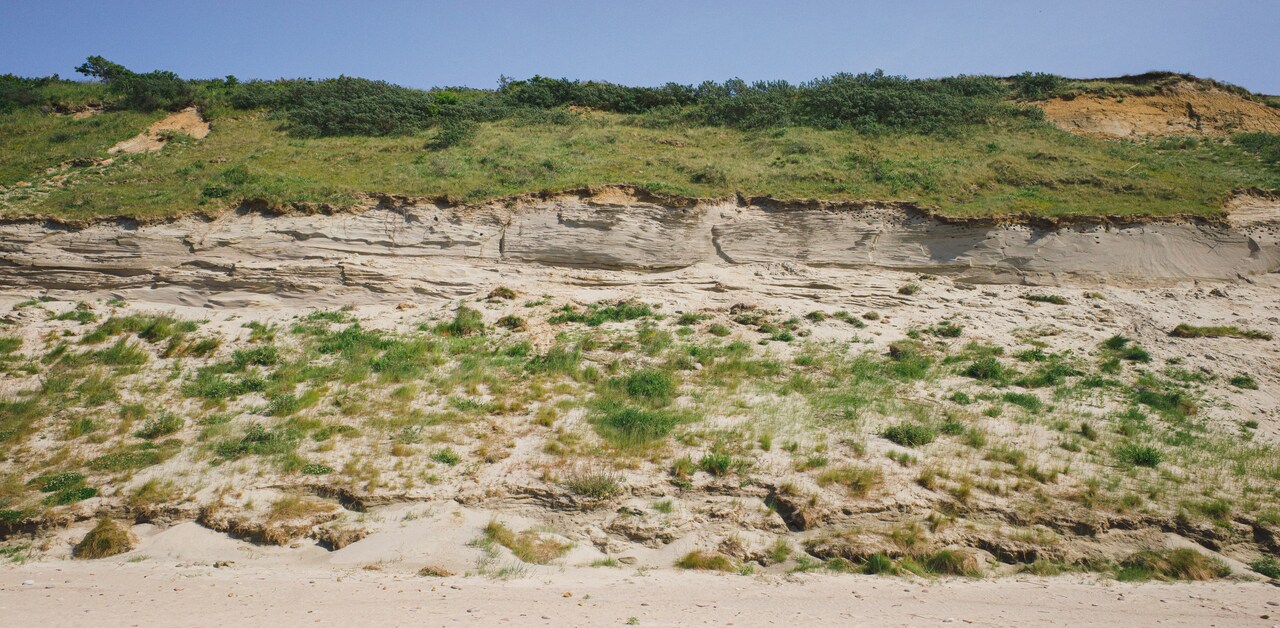Sheet Erosion is the removal of the upper or thinner layer of soil by various means, like as water, air, etc. In contrast to gullies and rills, which are more obvious forms of erosion, sheet erosion is gradual and initially unnoticeable.
As a consequence of this, it may be challenging to spot until significant losses or damages have occurred.
Although one of the most important natural resources on Earth is soil. Agriculture, plants, and human life are all built on it. However, soil erosion can occur in a variety of ways.
It is essential to comprehend this phenomenon as a means of preserving the environment, enhancing agricultural productivity, and increasing soil fertility.
In this article, we will discuss sheet erosion, its causes, effects, and control measures of sheet erosion, etc.
Table of Contents
What is The Sheet Erosion?
The regular thinning of a layer of topsoil by a flow of surface water, typically during heavy rain, is known as sheet erosion.
In contrast to rill erosion, which results in the formation of narrow channels or rills, it affects large areas of land.
Additionally, there are no obvious traces on the surface, so it goes unnoticed. Over time, erosion causes the fertile topsoil, which is rich in organic matter and essential nutrients, to become less fertile and more susceptible to degradation.
This kind of erosion can occur on both agricultural and non-agricultural land, particularly on slopes with low gradients where water is dispersed across the surface rather than concentrated in beds.
If you want to read an article on soil erosion in detail, you can click on soil erosion.
If you want to buy “The Oxford Student Atlas for India,” then you should visit here.

Causes of Sheet Erosion
A combination of human activities and natural forces causes sheet erosion.
The following are the main reasons:
1. Runoff from surfaces and rainfall: The majority of this type of erosion is brought on by too much rain. As the raindrops fall on the soil, they loosen the fine particles, which are then swept along by the water. When there is a lot of rain and the ground is bare, it is simple to remove the topsoil.
2. Deforestation: Plants and trees are natural fences that prevent soil erosion. Deforestation exposes vast areas and eliminates the protective layer of roots and leaves, exposing the soil to sheet erosion.
3. Overgrazing by Animals: Overgrazing cuts down on plant cover and hardens and loosens the ground. Surface runoff worsens erosion because rainwater is unable to penetrate the soil as intended.
4. Methods of agriculture that aren’t sustainable: Monoculture, over tillage, and crop rotation deprive the soil of crop cover for an extended period.
The absence of cover crops or organic matter weakens the soil’s surface, making erosion more likely.
5. Land Slope: Sheet erosion may even occur on gentle slopes. When the soil particles picked up by the water flowing down a slope are uniform, sheet erosion occurs.
6. Soil Properties: Sheet erosion typically occurs more frequently in sandy or loose-textured soils than in clay-rich soils due to their lack of cohesiveness and ability to be easily swept away by water.
Effects of Sheet Erosion
Although sheet erosion is not particularly striking to the eye, its long-term effects are devastating. Among the major effects are:
1. Erosion of Topsoil: The greatest loss of sheet erosion is that topsoil rich in nutrients disappears. This layer holds organic matter, microorganisms, and minerals, which sustain plant life.
The soil’s fertility drops dramatically when they are removed.
2. Agriculture’s Productivity Decline: Fertile soil provides the nutrients and moisture that crops require.
When sheet erosion damages the topsoil, crop yields drop, and farmers are forced to use chemical fertilizers, which have a long-term negative impact on the soil’s health.
3. Water Pollution: The eroded particles of soil usually find their way into the rivers, lakes, and reservoirs, hence causing sedimentation.
This not only affects the quality of the water, but it also affects aquatic life and reduces reservoir storage capacity.
4. Abuse of the Land: Constant sheet erosion causes desertification and land degradation, rendering the land useless as cultivation land or vegetation land. In the risk areas, this results in food insecurity.
5. Economic Losses: Poor harvests and rising prices for fertilizers and soil amendments cause farmers economic losses.
Governments spend a lot of money on water management and soil conservation on a global scale.

Control Methods for Sheet Erosion.
Fortunately, this can be avoided by controlling sheet erosion through sustainable land management practices.
The following are some good steps to take:
1. Afforestation and reforestation: One of the best forms of preventing sheet erosion is planting trees and vegetation. Roots hold the ground, and the leaves and branches cushion the soil against the effects of raindrops.
2. Using contour farming: In this technique, the plowing is done across the natural land contour rather than up and down the slopes. It serves to increase the rate of water flow and lower soil erosion.
3. Cover Crops: Cover crops, which may be legumes, grasses, or clover, during the off-season, ensure that the soil is not bare. Cover crops add organic matter to the soil by covering it with rain.
4. Mulching: Using organic or inorganic mulch prevents soil from being subject to direct rainfall and conserves soil moisture. It even enhances fertility in the soil in the long term.
5. Strips Cropping: In this method, Crops are alternately seeded in the strip of vegetation that is resistant to erosion and that is prone to erosion using this method. The crops that resist cause water flow to slow down, therefore limiting the loss of soil.
6. Terracing: Terracing helps conserve soil and slow the speed of the water in hilly terrain. Terraces create flat platforms, encourage water infiltration, and reduce runoff.
7. Regulated Grazing: Because livestock grazing is controlled, the grass cover will remain active. The advantage of rotational grazing systems is that they keep vegetation at bay and reduce soil compaction.
8. Check the Bunding and Dams: Along the slopes, bunds and small dams reduce the amount of water that would carry soil particles.

Conclusion
Sheet erosion is one of the most destructive causes of soil erosion. In most cases, sheet erosion is invisible to the naked eye. It is gradually eroding its topsoil, putting agriculture, ecosystems, and other human livelihoods in danger.
It is caused by factors such as deforestation, overgrazing, ineffective agriculture, and precipitation. Though the effects are dire, there are effective ways of curbing the issue through afforestation, contour farming, mulching, terracing, and cover cropping, among others.
Soil is not renewable in human terms or over a human time scale, and the prevention of soil degradation is in the best interest of future generations.
In addition to being a necessity for the environment, resolving the issue of sheet erosion is a need for the economy and society. Through sustainable farming, we have a chance to maintain our soil’s health and food security in the future years.

